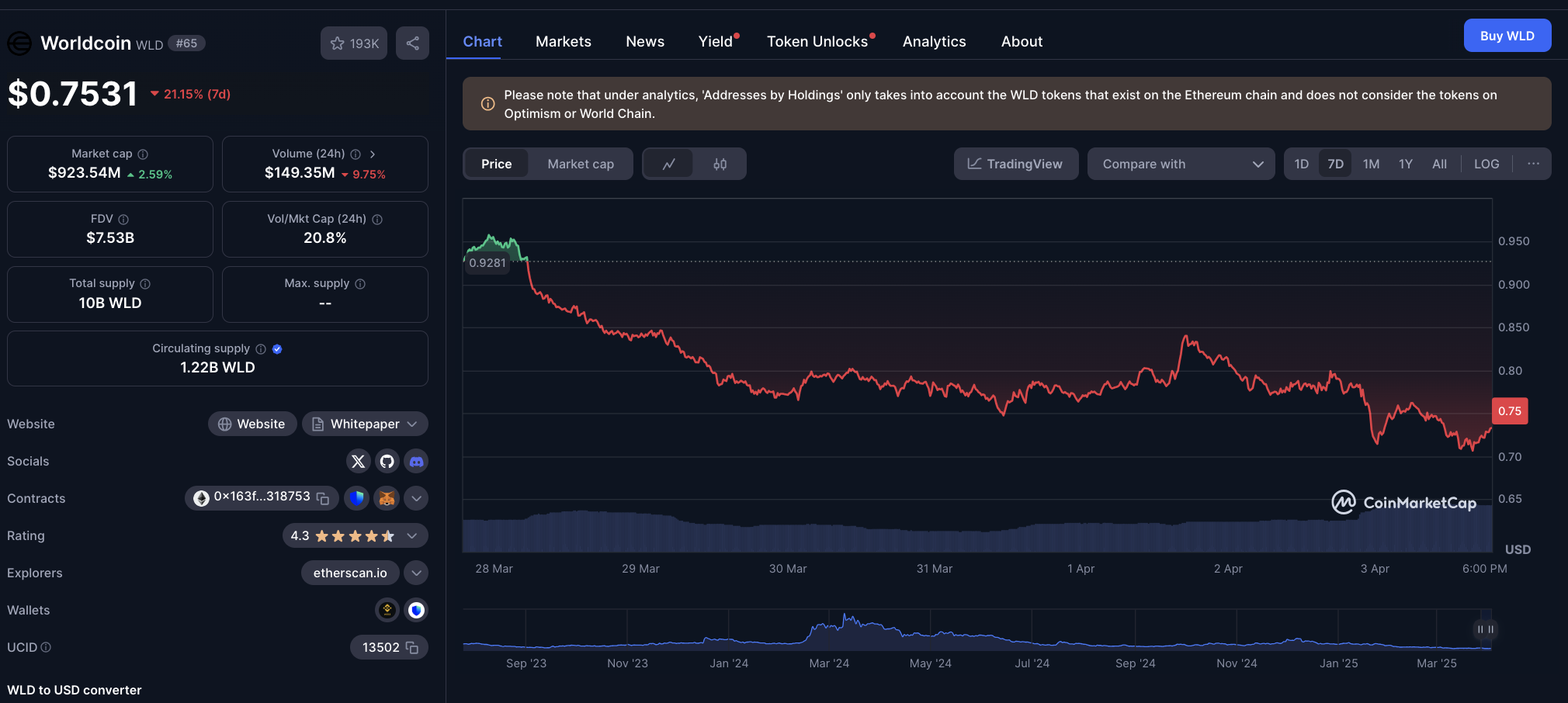Worldcoin Drops 20% as OpenAI’s $40B Agreement and Ghibli Excitement Do Not Boost WLD Value

Worldcoin (WLD) Price Movement Overview
- Worldcoin (WLD) recently experienced a 3% rise to reach $0.70 after a significant drop of 21% over the last week.
- During this time, OpenAI made headlines with their new “Ghibli” feature and a massive $40 billion funding agreement with SoftBank.
- A long upper shadow on Thursday’s candlestick indicates ongoing selling pressure against WLD.
In the past week, OpenAI, which is led by CEO Sam Altman, made important announcements including a $40 billion investment deal with SoftBank and the launch of its Ghibli-themed image generation tool. Despite this positive buzz, Worldcoin’s price dropped significantly, causing worry among its investors.
Worldcoin (WLD) Price Dynamics
The price dynamics of Worldcoin (formerly known as World Network) took a hit this past week, trimming its valuation by over $300 million and causing it to lose its unicorn status. The data from CoinMarketCap shows that as of Thursday, WLD was trading at $0.70, which was a slight increase of 3%. However, this came after suffering a 21% decline from its previous high of $1.2 billion market capitalization recorded on March 26.
OpenAI has made two noteworthy announcements to help boost the sentiment around Worldcoin. On March 25, they revealed the Ghibli image generation feature, which quickly gained popularity on social media. Sam Altman shared this news on X (formerly Twitter) to great excitement.
Furthermore, OpenAI’s partnership with SoftBank, which valued the company at $300 billion, marks another significant development. SoftBank has joined the roster of major investors, which includes Microsoft, who has already invested $13 billion into OpenAI, as noted in filings from the UK’s Competition and Markets Authority.
Nonetheless, despite the positive developments from OpenAI, WLD has struggled to capitalize on these announcements, indicating possible concerns that extend beyond just the relationship between OpenAI and Worldcoin.
Factors Behind Worldcoin Price Decline
Since its launch in July 2023, Worldcoin has normally reacted strongly to news related to OpenAI. For example, after the release of OpenAI’s Sora video-generation tool in February 2024, WLD saw a dramatic price surge of over 250%, hitting previous all-time highs above $8 by March 10. Investors had expected a similar response regarding the recent announcements from OpenAI.
However, broader economic pressures, specifically tariffs introduced during the Trump administration, appear to be dampening enthusiasm. These tariffs have negatively impacted U.S. stock values, leading to a bearish outlook on the market as other countries consider retaliatory measures.
As a result, the downturn in technology stocks has partially contributed to the poor performance of the crypto-AI sector, negatively affecting sentiment towards Worldcoin despite OpenAI’s announcements.
Worldcoin Price Forecast: Potential Downturn Ahead
While OpenAI’s recent announcements should ideally have positive effects, market sentiment is heavily influenced by the external pressures from tariffs. Without a major bullish catalyst, WLD may continue to struggle in the coming weeks.
Analyzing the WLD/USD chart reveals several technical indicators suggesting potential downward movement. The long upper shadow present on Thursday’s candlestick indicates that selling pressure remains dominant, which undermines any potential rebound. Additionally, the current trading level shows WLD is below essential resistance zones, shown by the Donchian Channel’s upper band at $0.986 and the middle band at $0.845.
If WLD can rise above $0.85, it could signal a short-term recovery. In contrast, if the price declines below $0.70, it could escalate losses towards the psychological support level of $0.50, presenting a troubling forecast of a possible 30% drop.
The overall market momentum seems weak, represented by the bearish readings on the MACD (Moving Average Convergence Divergence) indicator. Currently, the MACD line is slightly improving, but not enough to suggest a strong recovery without substantial volume inflows entering the market.






